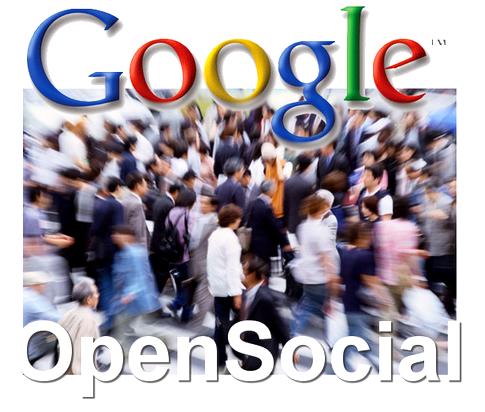By Bill Doerr, Sales & Marketing Editor

Executive Summary
Referrals are highly desired but equally challenging to obtain for several possible reasons. An alternative – a Preferral – can be equally valuable to your bottom line but far easier to generate. What these are, why you’ll want to generate them for yourself in 2008 and how to do that is what you’re about to learn.
The Problem with Referrals
What? How can there be any problem with referrals except not getting enough of them? Actually, as good as referrals can be, they aren’t without their problems. I offer their relative scarcity in many service businesses or professional practices as ‘proof’ of that claim.
Why Too Many People Are Getting Too Few Referrals
| 1. We Don’t Ask / Don’t Know How To Ask |
| Why? A lack of skill in asking for referrals. We’re all clear on the objective but we come up short on the methods and skills needed to actively generate referrals on a regular basis. |
| 2. It’s Painful When We Ask |
| We fail to ask for referrals consistently. That’s a symptom, not the underlying cause. The underlying cause behind not asking for referrals is often the frustration you experience when you ask for but don’t get the referrals you want. Think about it. If you’re not getting them, you – just like the white rats in B. F. Skinner’s psychology labs – will get frustrated. And frustration – a ‘negative reinforcement’ is a powerful motivator to avoid doing the very behavior – asking for referrals – that might produce the result you want. Think about ‘cold calling’. Same difference! It’s classic reinforcement theory in everyday practice. |
| 3. People Honestly Don’t Know Who Needs Us |
| Most of us aren’t psychic. So people don’t always know someone who may need you. In fact, the very people who may benefit the most from what you do often don’t reveal their need or desire for the benefits you offer to the very people who could refer you to them. So they don’t. And, in the end, everyone loses out in the process. |
| 4. People Aren’t Comfortable Judging Others |
| Finally, most people are extremely uncomfortable making a subjective judgment that their friends, family, business associates, etc. are somehow ‘broken’ or ‘needy’. Even if they’re right, there’s a lot of emotional baggage that comes with making that kind of judgment about someone they know. That’s another type of ‘negative reinforcement’. So guess what? People look at you and say, “Gee, I can’t think of anyone right now . . . but I’ll be glad to call you if I find someone who may need you, OK?” |
These four factors make it difficult for other people to help you identify and connect with people they know who, given the right circumstances, may want to know you and possibly utilize your services to enjoy the beneficial difference you can create in their lives with your problem-solving expertise.
An alternative, known as a ‘Preferral’ is easier to obtain and, over time, offers more value.
What IS a ‘Preferral’?
A Preferral is a preferred introduction . . . made by someone you know to someone they know . . . who possesses one or more characteristics that your ‘best clients’ have in common. A Preferral enables you to leverage the influence and prestige (i.e. goodwill) of the person you know in common . . . until you can earn your ‘stripes’ on your own.
Why Preferrals Are Easier To Get Than Referrals
As an introduction, a Preferral doesn’t impose any burden on someone to either know someone who needs you or to make a subjective judgment that maybe they do. That alone takes care of 50% of the main reasons why most people aren’t generating enough referrals.
Also, an introduction is definitely easier to ask for than a referral. And therein lies the secret to making the behavior of asking for a way to connect with the ‘right’ kind of people . . . far less emotionally painful.
For example, let’s say I know someone you’d like to meet. Which approach do you think would be more effective . . .
“Bill, I know you know Mike Peterson. Would you refer me to him? I’d like to see if he needs my services”.
“Bill, I know you know Mike Peterson. If we were at Chilies having lunch and Mike stopped by our table on his way out, would you introduce me to him?”
It’s pretty obvious that getting an introduction to someone is more likely to be successful than getting a referral to them. That’s positive reinforcement for the very behavior that you need to do to generate the results you want, isn’t it?
Asking for an introduction to someone who possesses one or more visible characteristics, makes it easier to help you meet people someone else knows that you’d like to know, too.
For example, one of my clients is a financial planner who works with people who have a significant net worth. She’s found that a ‘visible characteristic’ that’s quite common among the ‘best clients’ she has is that they own some big boats. So she asks potential Preferrers – the connectors who can introduce her to people they know that she’d like to know – this question: “Tom, do you know anyone who owns a boat that’s AT LEAST 42’ or bigger?” The other person will either say, “Yes, I do” or, “No, I don’t”. If they don’t, she doesn’t have to pursue the matter because they couldn’t connect her to someone she wants if their life depended on it. But, if they said, “Yes, I do” . . . then she can ask for an introduction to that person. Again, that’s far easier on her and far more likely to produce the result she wants – an introduction . . . a connection . . . to someone she’d like to meet under the most favorable conditions possible.
Why You Must Think Strategically To Use Preferrals To Grow Your Revenues
In order to commit to seeking introductions to people who possess one or more visible characteristics (to avoid the need to be psychic or judge how needy someone may be) you must see the ‘BIG Picture’ – the ‘forest for the trees’ so to speak.
By that I mean you must understand that meeting people by introduction means you’ll usually meet them when they have ‘no need’ for what you do . . . at the time you first meet. But sooner or later, they will. And, if they don’t know you BEFORE they need to, how in the world will they ever find you when they want to?
So, if you’re meeting people who share characteristics in common with the kind of people who will, sooner or later, develop a ‘need-to-know’ for the benefits you offer then you must be willing to build a relationship with them. That takes time and effort. Usually before they become your client.
That implies using a ‘client cultivation’ plan. That demands time. And, a commitment to ‘stay the course’ with someone who ‘looks good’ but may not be ‘hot’ . . . at the moment.
And just as surely as the farmer knows that planting good seeds in good soil then watering and weeding and feeding them will probably produce a ‘harvest’ before too long, you can be confident that doing the same thing with the right kind of people – the seeds of your future success – will bear equally sweet fruit for you and your business.
A Final Thought: Polar Bears Have a Strategy You Should Follow
Referrals will always be preferable to Preferrals because referrals are ‘hot’ opportunities. Unfortunately, you don’t control who is ‘hot’ for your services or, when they’ll be ‘hot’. People will develop a need when they decide they have a need-to-know, not you.
But you do have control over if, when and how you’ll ask others for introductions to the kind of people who, sooner-or-later, are likely to develop a need for your services.
And, because you’re meeting people – the ‘right’ kind of people – through an introduction rather than a crisis – they’re probably not going to be ‘hot’ to act -- when you first meet.
But take a lesson from the polar bears. They live if they eat. And seals are their main food. Seals are mammals and they need air to breath. So polar bears find the air holes in the ice where their ‘meals’ surface periodically to breath. Unfortunately for the seals, sooner or later a polar bear is waiting for them and that’s that.
The lesson here is that if you find a ‘good hole’ . . . if you’re meeting the right kind of person for your particular expertise or services . . . stay put! Cultivate that relationship so that you become a ‘preferred provider’ to that person.
The polar bears know that ‘sooner-or-later’ their patience will have a payoff. They’ll eat. They’ll survive. Chasing from one hole to the next will only exhaust the bear and, absent incredibly good timing, produce little or no food for the bear.
So I hope you will consider this seasonal ‘gift’ from me to you . . .
Celebrate every referral that comes your way. Reward the people who give them to you to reinforce their referring behavior in the future.
But also seek Preferrals. Seek introductions to people you want to know through people you both know in-common.
And if you want to know how to do this truly effectively . . . please accept my offer to download an informative Special Report on this topic from my website.
Happy Holidays and a Prosperous and Healthy New Year!
Bill Doerr, CCO of SellMore Marketing, LLC is the creator of The Preferral Prospecting System®,
The Expert Directory® and The Ultimate Client Development System™. Bill uses these programs to
help service providers build their business by leveraging relationships and generating more referrals.
You can reach Bill by phone at: 860-798-6964, online: www.sellmoremarketing.com or by
email or by the TNNW Blog: http://thenationalnetworker.blogspot.com
Forward/Share This Article With Colleagues And Social Media:

When a Referral . . . Isn’t The Best Thing You Can Get





















